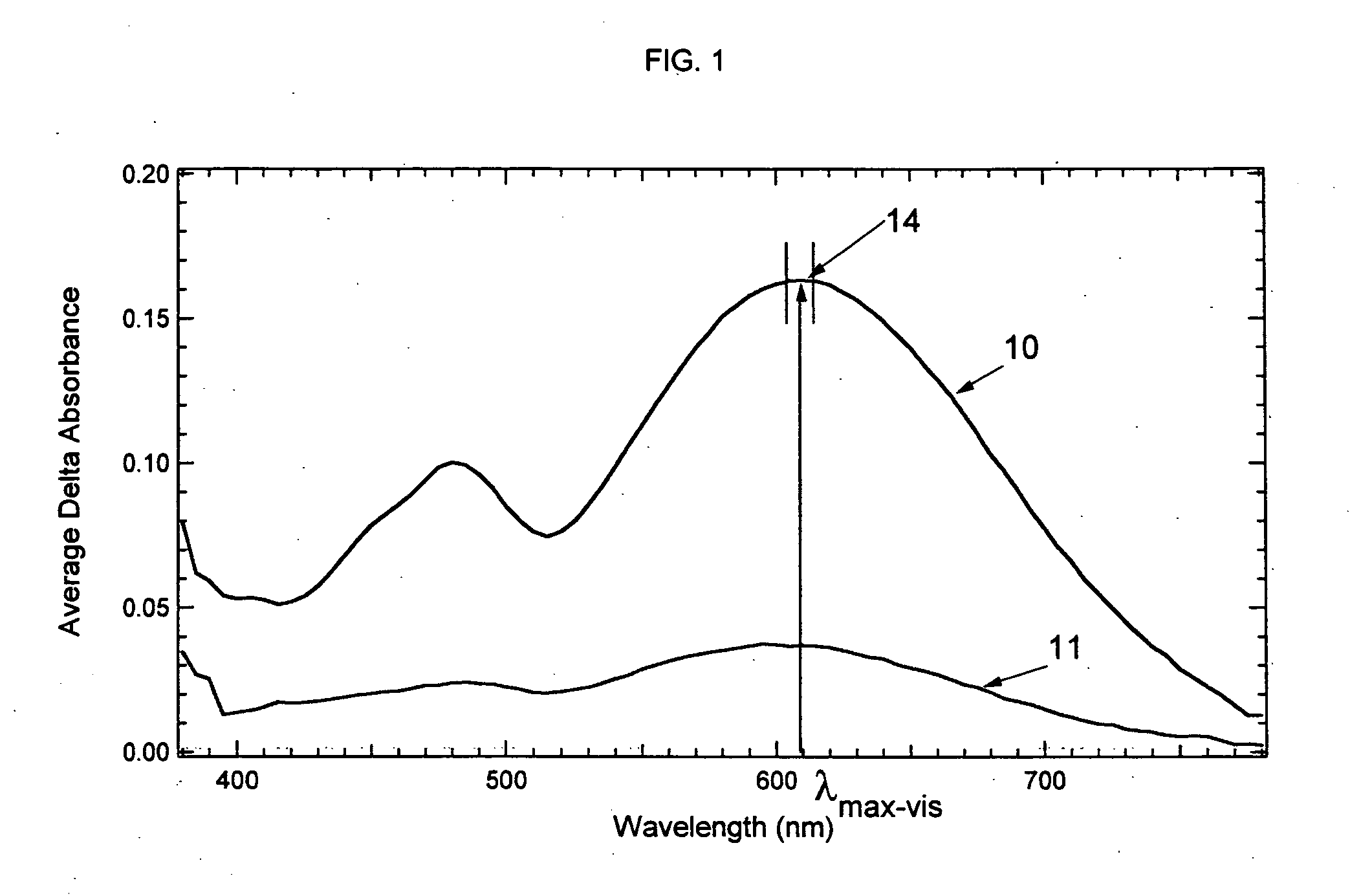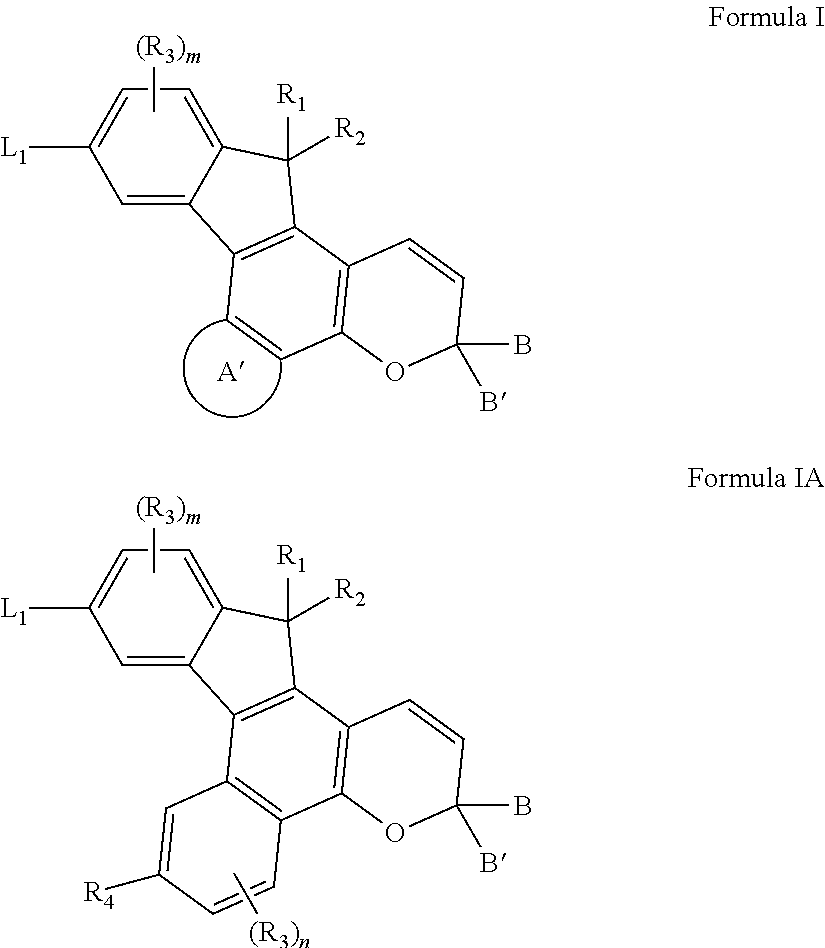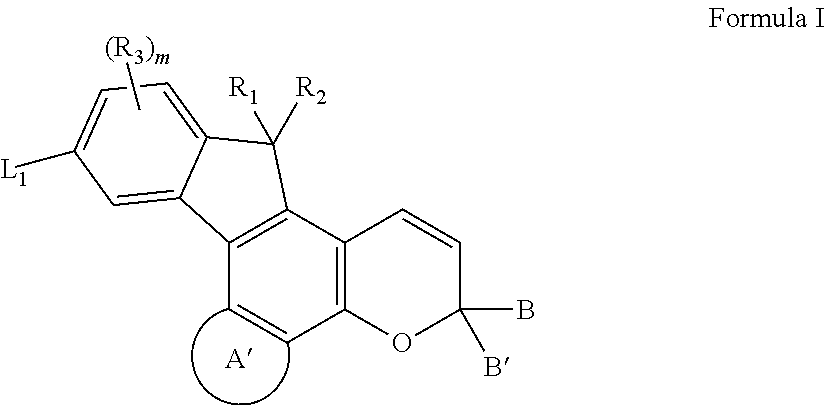Photochromic compounds and compositions
- Summary
- Abstract
- Description
- Claims
- Application Information
AI Technical Summary
Problems solved by technology
Method used
Image
Examples
example 1
Step 1
3-Bromo-4′-methylbenzophenone (50 g), dimethyl succinate (34.5 g) and toluene (1 liter (L)) were added to a reaction flask equipped with a mechanical stirrer, a solid addition funnel and a nitrogen blanket. The mixture was stirred at room temperature until the solids were dissolved. Solid potassium t-butoxide (22.4 g) was added through the solid addition funnel and the mixture was stirred at room temperature for 4 hours. The resulting reaction mixture was poured into 1 L of water and the aqueous layer, which contained the product, was collected. The toluene layer was extracted with 200 mL water. The combined water solution was washed with toluene. HCl (2 N, 20 mL) was added to the water solution. A yellow oil precipitated. The resulting mixture was extracted with ethyl acetate, dried over magnesium sulfate, concentrated and dried in a vacuum. A yellow glassy oil (55 g) was obtained as product. It was used directly in the next step.
Step 2
A mixture of the Stobbe acid products fr...
example 2
Step 1
Magnesium (3.2 g) and THF (50 ml) was placed in a dry flask equipped with a dropping funnel which contained a mixture of 1-bromo-4-(trifluoromethyl)benzene (30 g) and THF (200 ml). 20 ml of the solution in the dropping funnel was added to the flask. A few drops of dibromoethane were also added to the flask to help initiate the reaction. Few minutes later, solvent in the reaction flask started to boil. Rest of the solution in the dropping funnel was added drop wise. Ice water was used occasionally to cool the reaction mixture. After the addition, the mixture was stirred at room temperature for two hours. 3-bromo-4-methylbenzonitrile (26 g) was then added to the reaction mixture. Mixture was stirred at room temperature over night. 3 N HCl (200 ml) was added. The mixture was stirred for 4 hours. Organic layer was collected by a seperatory funnel and then concentrated. A silica gel plug column separation was used to clean up the product with the use of mixture solvent 90 / 10 Hexane...
example 3
Step 1
Magnesium (5.26 g) and THF (50 ml) was placed in a dry flask equipped with a dropping funnel, which contained THF (400 ml) solution of 1-bromo-3,5-difluorobenzene (44 g). One tenth of the solution in the dropping funnel was added to the flask. A few drops of dibromoethane were also added to the flask to help initiate the reaction. Few minutes later, solvent in the reaction flask started to boil. Ice bath was applied. Rest of the solution in the dropping funnel was added drop wise at 0° C. in half an hour. Half an hour after the addition, most Mg disappeared. Mixture was let stir at room temperature for 2 more hours. All Mg went into solution. At 0° C., bis[2-(N,N-dimethylamino)ethyl]ether (35 g) was added. Stir for 15 minutes. Then 3-bromobenzoyl chloride (50 g) was added in one portion. Mixture was stirred for 2 hours at 0° C. water (500 mL) was added to the mixture. 12N HCl was used to adjust pH to ˜2. DCM was added to the mixture (500 ml). Organic layer was collected, washe...
PUM
| Property | Measurement | Unit |
|---|---|---|
| Fraction | aaaaa | aaaaa |
| Fraction | aaaaa | aaaaa |
| Fraction | aaaaa | aaaaa |
Abstract
Description
Claims
Application Information
 Login to View More
Login to View More - R&D
- Intellectual Property
- Life Sciences
- Materials
- Tech Scout
- Unparalleled Data Quality
- Higher Quality Content
- 60% Fewer Hallucinations
Browse by: Latest US Patents, China's latest patents, Technical Efficacy Thesaurus, Application Domain, Technology Topic, Popular Technical Reports.
© 2025 PatSnap. All rights reserved.Legal|Privacy policy|Modern Slavery Act Transparency Statement|Sitemap|About US| Contact US: help@patsnap.com



